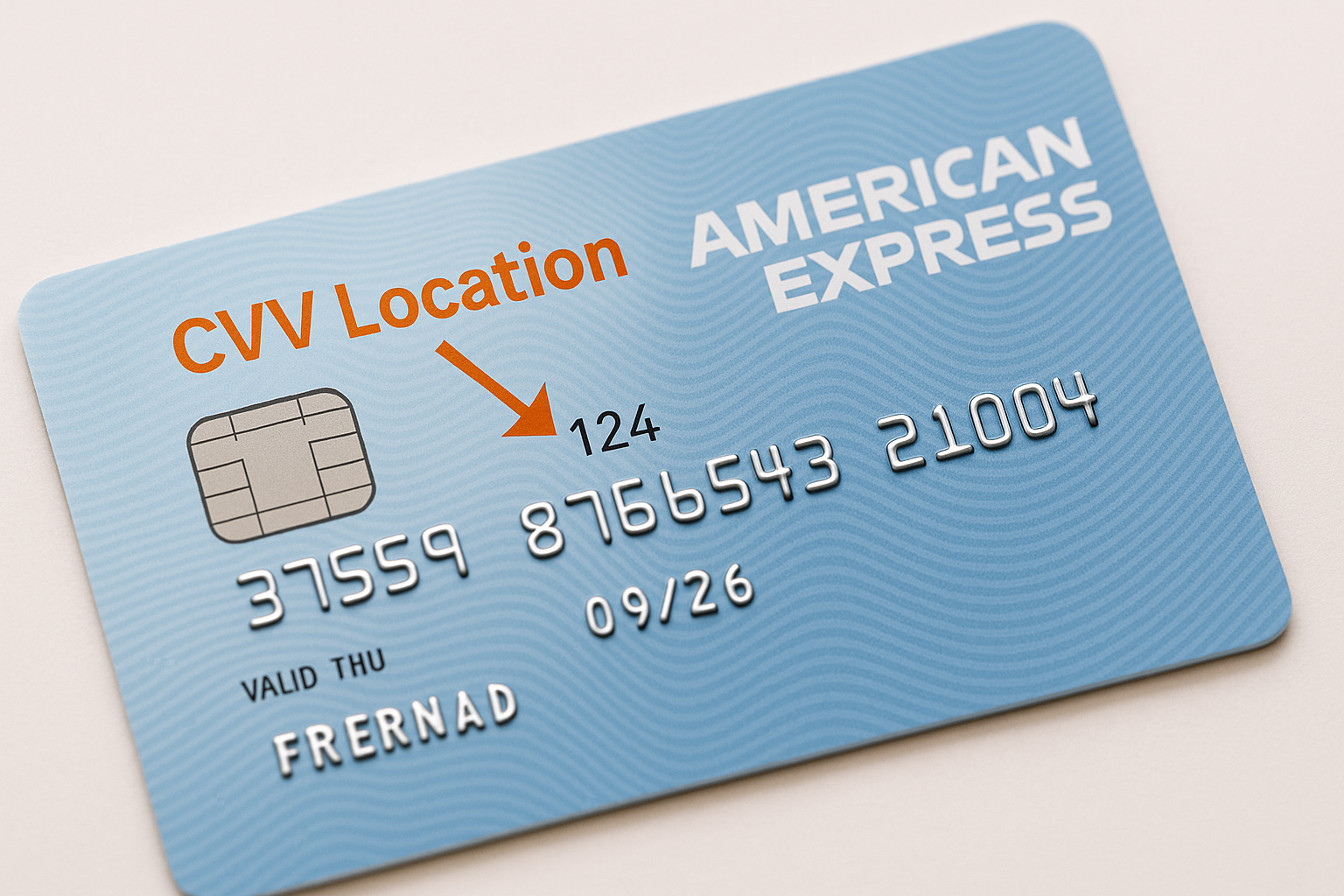Amex CVV Location: Find Your 4-Digit CID Quickly
Where to Find Your Amex CVV: A Handy Guide
If you’ve ever been stuck with your Amex card trying to figure out where on earth that four-digit security code is, don’t worry, you’re not the only one. While Visa® and Mastercard® have their CVV tucked away on the back, Amex puts its code right out front. In the next few minutes you’ll find out exactly what that code is, why Amex chose its unique location, and a couple of pro tips so you never get it confused again.
Table of Contents
- What Is the Amex CVV?
- Why Its Placement Matters
- Steps to Locate Your CVV on an Amex Card
- Pro Tips and Common Pitfalls
- Quick Facts You Might Not Know
- FAQ
- Conclusion
1. What Is the Amex CVV?
On American Express cards, the four-digit security code is known as the Card Verification Value—or, more accurately, the Card Identification Number (CID)—and it’s on the front above your card number. In contrast to most cards where the three-digit CVV is found next to the signature panel on the back, Amex chose a front-of-card method to keep things easy for members. The term “CID” is used to distinguish Amex’s four-digit code from the CSC (Card Security Code) others refer to as the three-digit code on the reverse.
CVV stands for Card Verification Value and is utilized as an extra measure of security against card-not-present transactions, such as phone or Internet purchases. Having it printed in flat text rather than embossing it, Amex discourages fraudsters who have a retro card imprinter from grabbing that number when they are swiping your card in physically.
2. Why Its Placement Matters
Security is only half the story. Positioning the CID on the face, Amex makes it impossible for you to inadvertently reveal your code when you show a cashier or a lower-level employee the back of the card. It’s an intelligent design that traces its origins to a five-decade-long body of research on stopping frauds, including early CSC experiments by Equifax in 1995.
For internet purchases, this placement has you always enter the correct code. Mixing up the three-digit CSC on the reverse with your CVV is a surprisingly common error that can lead to rejected transactions—and a great deal of head-scratching. With your Amex CVV in front of you, you breeze through checkout without that extra click that tells you to “try again.”
3. Steps to Locate Your CVV on an Amex Card
- Hold your card face up so that the embossed 15-digit account number is visible.
- Look just above the last four digits of your account number—you’ll see a small, four-digit code.
- Ignore any three-digit numbers on the back near the signature strip; that’s the CSC, used for customer-service identity checks rather than online payments.
- Type those four digits into your payment form when prompted for your CVV—no substitutions needed.
4. Pro Tips and Common Pitfalls
- Virtual Cards & Dynamic Codes: When you’re using the virtual card feature via Amex, the four-digit dynamic code will already be filled out at checkout so you don’t have to go hunting for it.
- Don’t Store It Publicly: Leave it out of photos or screenshots shared out—anyone with access to those four digits along with your card number and expiration date can charge up your account.
- Keep an Eye on Wear: On older cards, the CID from laser printing will fade with age. If it is hard to read, call Amex for a replacement rather than guessing.
- Keep in Mind the Difference: That three-digit number on the back of the card is not a typo—phone-based identity verification, not online security.
5. Quick Facts You Might Not Know
- CID Hot-Stamped: Amex CIDs are hot-stamped, i.e., they are applied after embossing to prevent smudging and become tamper-evident.
- Released in 1999: American Express incorporated the front-of-card code based on growing Internet purchases and member response in 1999.
- Not present on the Magnetic Stripe: Compared to the embossed account number, the CVV/CID is not preserved on the magnetic stripe—therefore skimmers are unable to take it wirelessly.
- World Standard: Even though most networks use a back-of-card CVV, Amex’s front-of-card CID is presently the hallmark of its branding and security philosophy throughout the world.
6. FAQ
Why is Amex CVV printed on the card front?
Amex opted for front placement in a bid to prevent accidental exposure when you’re flipping over the card and in an attempt to differentiate their four-digit CID from the standard three-digit CSC found elsewhere.
How are CID and CVV different?
CID (Card Identification Number) refers to Amex’s four-digit number on the front. CVV (Card Verification Value) generally refers to the three-digit number on Visa® or Mastercard® backs.
How can I be certain that I am entering the correct code?
Enter the four-digit number on top of your Amex card number at all times. If, by mistake, you enter the three-digit number on the back, the purchase will be denied until you switch to the front-of-card CID.
7. Conclusion
Finding your Amex CVV is surprisingly simple once you know it’s staring you in the face. That front-of-card placement isn’t a bizarre design quirk—it’s a considerate security feature that streamlines your checkout experience and makes life harder for fraudsters. The next time you’re asked to enter your CVV, enter those four numbers on the front of your card confidently.
➔ Post created by Robert AI Team




